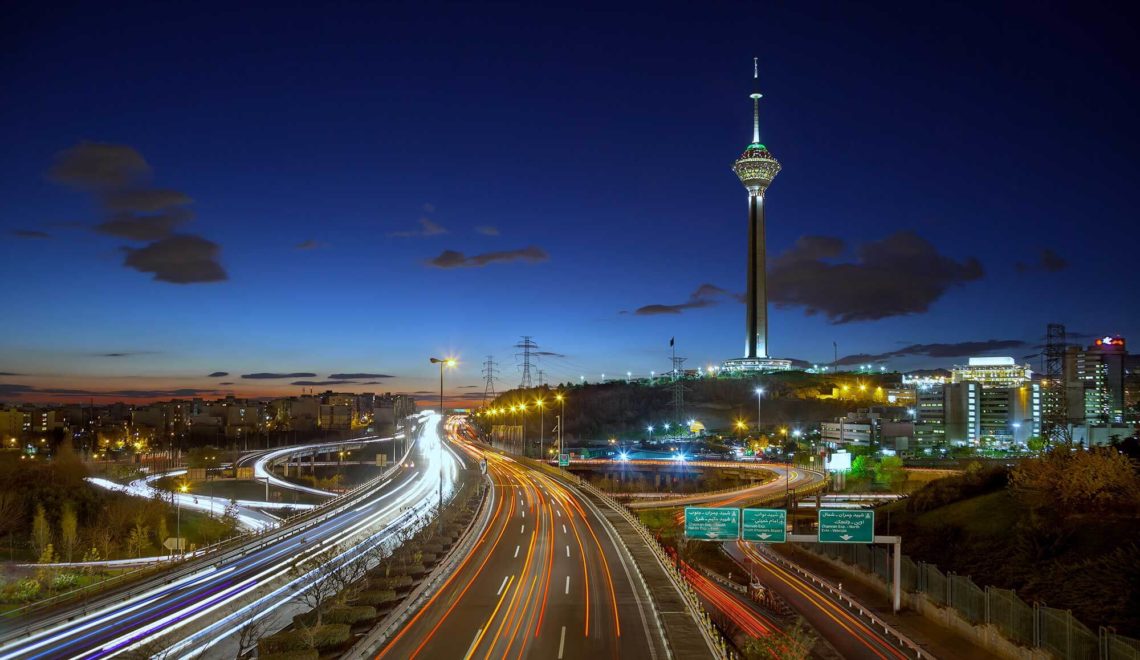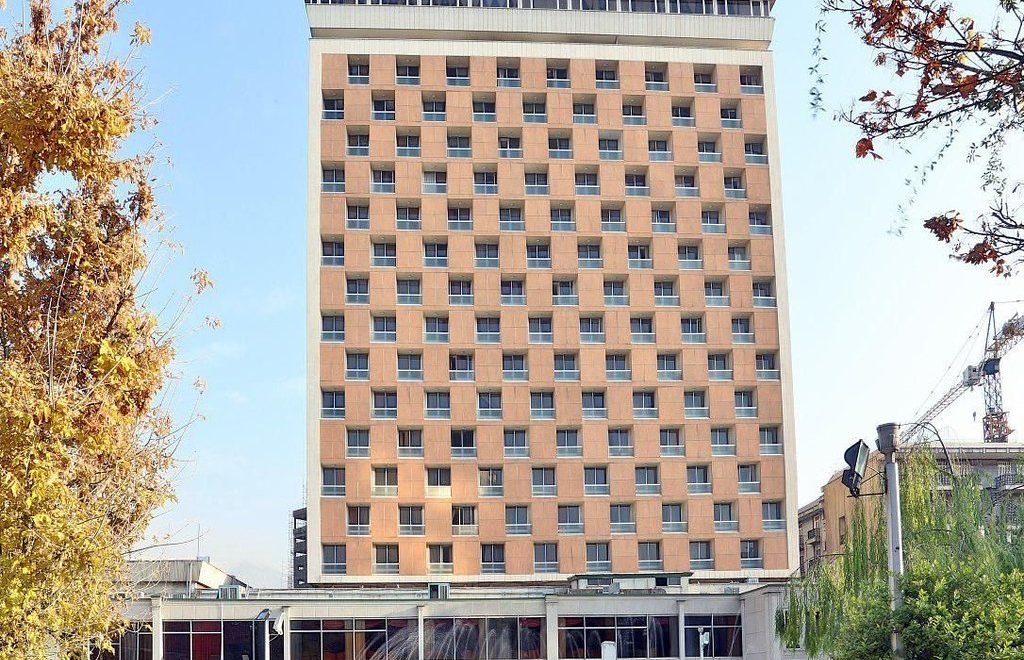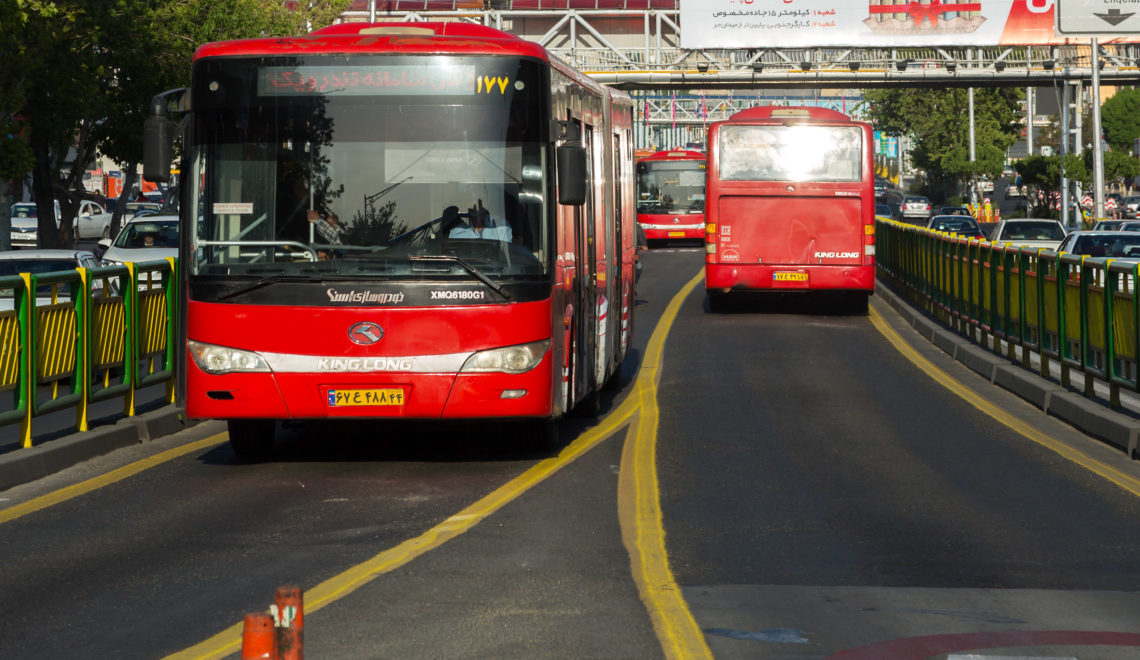Some call it the moving underground bazaar, some other wield it as a secondary way (after Snapp and hailing a cab in general) to get to any corner of Tehran, for others, it’s just a hectic experience with a lot of unpleasant smells, and some people can’t imagine a day when one of the metro trains in Tehran stops working. While domestic Iranians, a good portion of them at least, have a clear idea of what awaits them in the wagons of metro roaring through underground tunnels in Tehran, the concept of an unfinished metro project deep in the ground in one of the busiest cities in Middle-East and the places it can take you to, is still somewhat bizarre to foreigners and tourists. To shed some light on the subject and help incoming tourists unfamiliar with the subway situation, we’ve put together a complete Tehran Metro Guide with pretty much every little detail any traveler would need to make a fast decision before stepping up to the ticket glass-booth and onto the platform.
Tehran Metro Culture
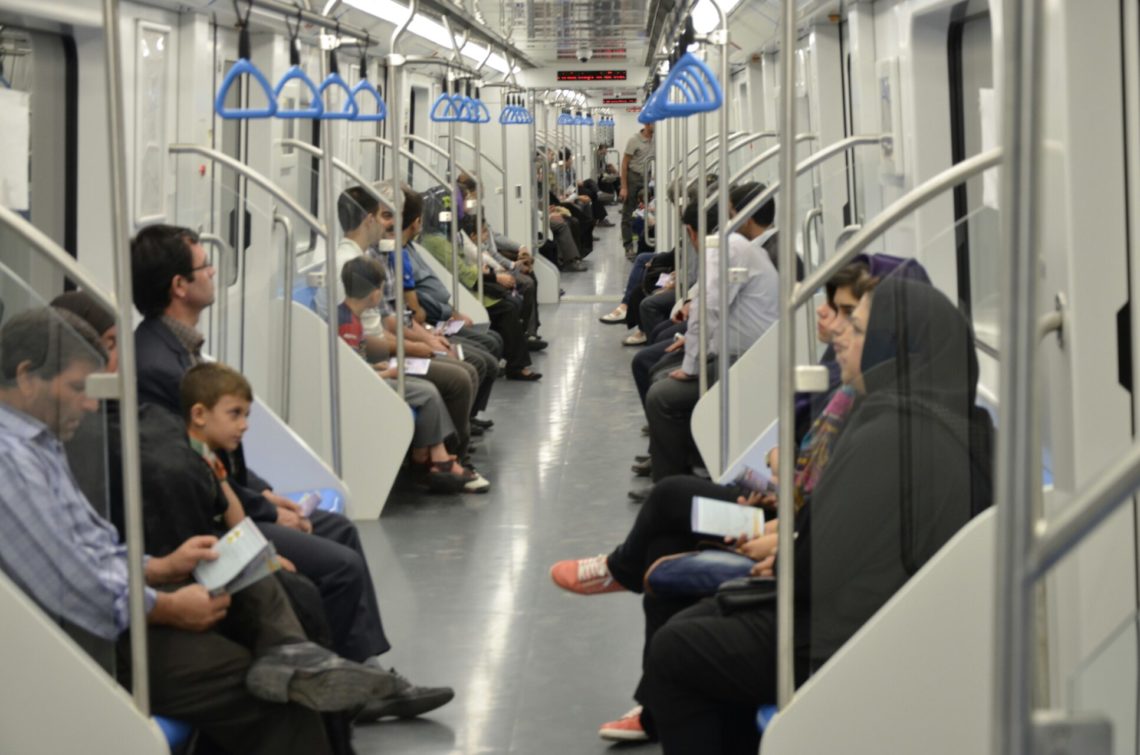
Tehran metro
Tehran metro is more than just a ride; it’s an underground pipeline of culture and hustle. It connects the most northern parts of Tehran (like Tajrish, Nobonyad) to the very southern urban areas (like Nemat Abad, Kahrizak), and the same can be said for the east-west line of Tehran metro. With its excessive reach to the main parts and outskirts of the city and to a wide variety of people, and therefore far-ranging cultures collide into each other inside the well-preserved carriages of the metro. Because of that, in every ride, you will be squeezed up in a well-spaced metal room with loads of friendly people of different backgrounds who all have their own story, belief, culture, and life to share; and one thing Iranians are in no manner shy about is to ask you about where you come from and try to start short chats.
Also check out: Tehran’s BRT guide
Exchanging few words with complete strangers who are overly excited in your story will soon enough be cut short by subway hustlers boasting about their high-quality, low-priced goods at the top of their voice, sometimes in a rhythmic tone, and other times sugarcoated with a wit in Farsi that makes everybody turn their heads.
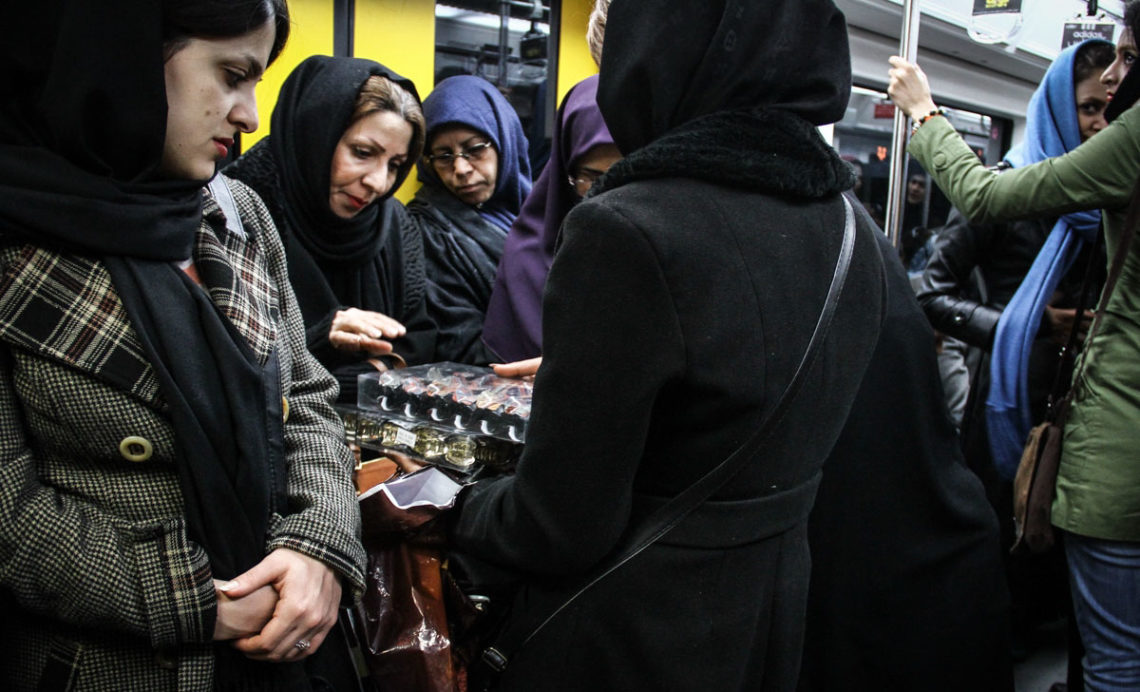
Women wagon in Tehran metro
Everything can be found in their bags or wrapped around their necks and arms. These metro-tribe people cover themselves in what they want you to see and buy; socks, mobile accessories, toys, gum, snacks, bread, women underwear (in the women-only carriages and sold mostly by female sellers), and even bottles of water and warm sandwiches if you ride a metro to Karaj. And also, don’t be shocked if you hear that half these products that cost as high as one dollar almost always are made by nanotechnology!
The Women Only Carriages
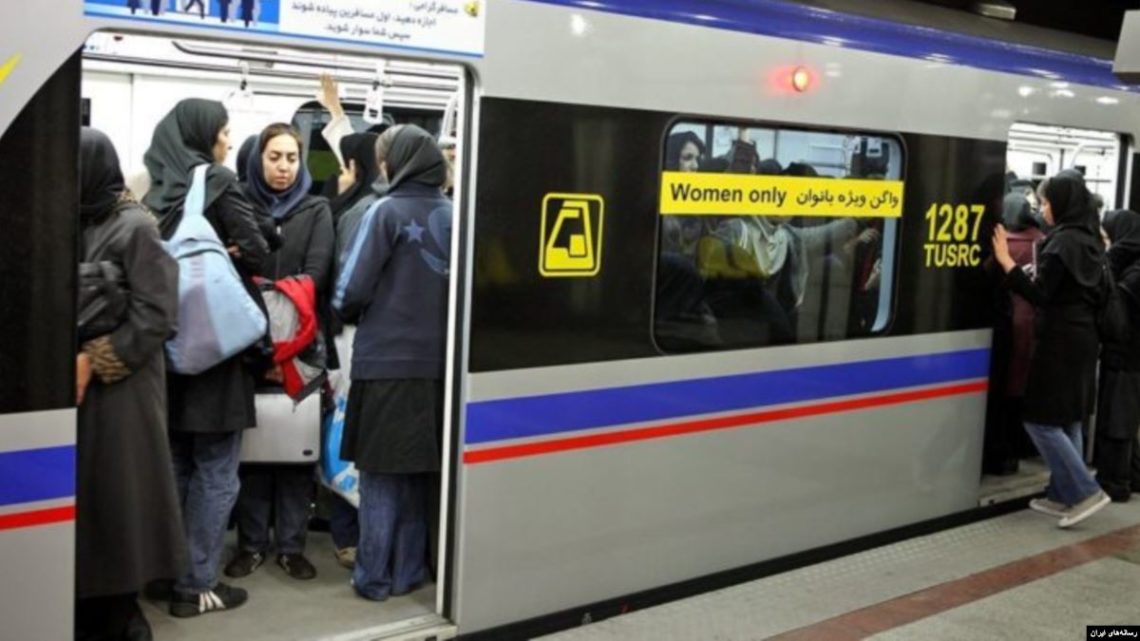
The Women Only Carriages
Like some of the other public transportation services working in the capital, say some of the BRT liners cruising in the main streets of Tehran, or ordinary city buses, Tehran’s metro station also has a dedicated carriage for women at both its heads. Despite yellow indicators and signs drawn on the station grounds, walls, and on the very carriages themselves, nobody protests a woman walking into the men’s carriages as part of a more recent social movement, mostly thanks to the Millennials or Gen Z. Today, Iranian women express themselves more freely and don’t feel suppressed by the restrictive traditional rules.
Also check out: museums in Tehran
As a result, it’s highly unlikely not to spot Iranian couples and young love birds in the corner of a metro carriage, romantically close, innocently giggling and exchanging jokes and laughter with nobody else minding them a bit. It’s even absolutely normal that someone gives up their cozy spot in the corner so that the women could stand more freely, and the couple can have a more pleasant ride until they arrive at their destination. So, next time you’re in Tehran and wondering about the situation in the metro or that you have to be separated from your partner, our advice to you is that not to sweat it. You can enjoy the steady ride while you’re partner is at your side and not a few carriages away.
The Metro Rush Hours
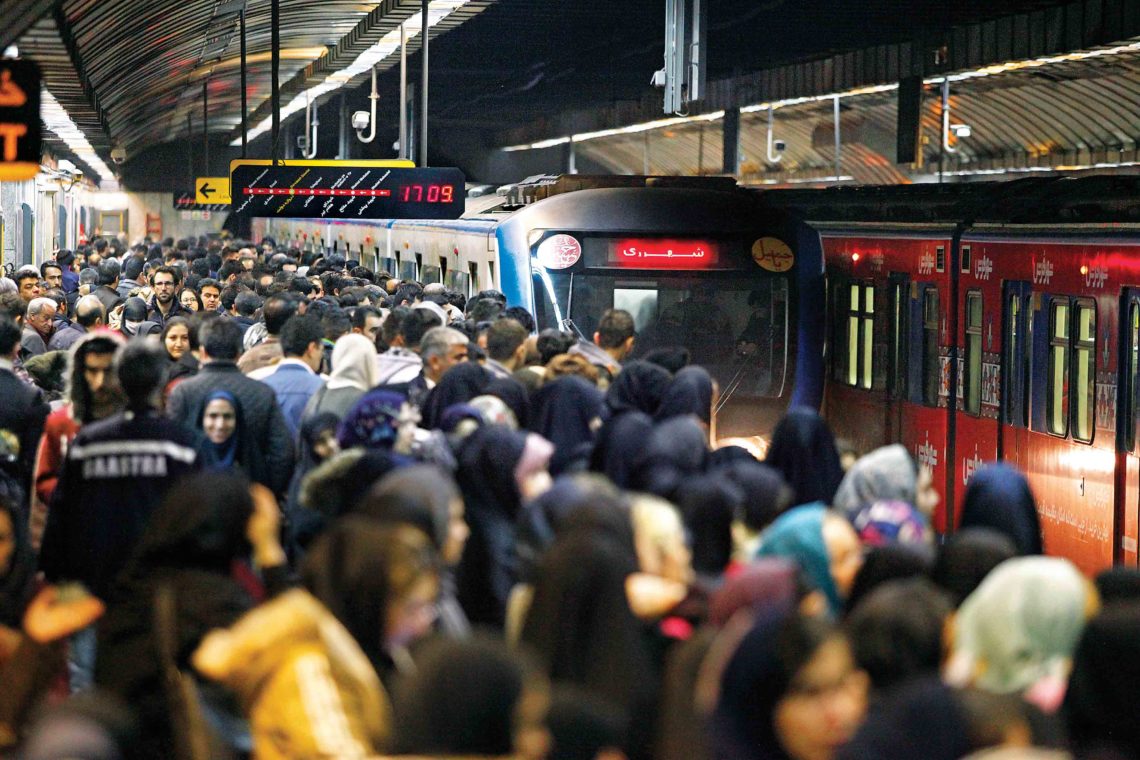
The Tehran Metro Rush Hours
Same as any other operating subway system in the world, Tehran metro also does experience rush hour times and a busy commuting day at any other given week. However, there’s a schedule to this overcrowding in Tehran metro, and it’s not hard to get your head wrap around it. Usually, the early hours (usually 7 to 10 A.M, local time) in the morning swarms endless waves of grumpy looking employees and students into the tunnels waiting on pretty much any place they want on the platform, even over the yellow line, waiting impatiently for the next carriage door to open up before them. If you’re planning to roam around Tehran in those hours, you better be ready for a somewhat lower version of the surrounding tactics of the “Bolton army” masterfully directed in the game of thrones “Battle of Bastards” episode, whenever a new train arrives. The same thing can be said for the later hours in the day, mainly in the afternoon (5 to 8 P.M). Another massive horde of impatient daily metro-commuters hurries back to different stations to get back to their homes, many of whom come to the central city from neighboring cities like Karaj or Islamshahr or Shahriar for work. To add more numbers to the pile, university and high-school students get off too during these hours to make the chaos even more chaotic, best to stay away from the metro at these hours, especially the lines leading out of Tehran.
Although the women-only carriages sounded like a decent gesture to help female train riders have more space and avoid being squashed in the hurl of hurried men, still the number of women-only dedicated carriages don’t match the hundreds of women getting on board the metro in the rush hours, and unfortunately, women too feel the toughness of Tehran metro at its worst times.
How to Get a Tehran Metro Ticket?
At each station, ticket booths are working before the first train start working. Most ticket men, or women, don’t speak English fluently enough, but with a little help from your hands and unrecognized sign language, they usually get what type of ticket you need. Also, probably, due to the over the top friendliness and curiosity of ordinary people, you’d not need to show off your crazy body language moves get a ticket since there’s always that kind Iranian individual who would take time out of his busy daily routine to help you with the ticket-buying while laughing and asking endless questions about you.
There are two types of metro tickets you can get. The first one is a paper printed one-way or two-way ticket that the ticket guy will issue you for 1200 Tomans (nearly 10 cents). However, if you’re staying in Tehran for quite some time and you need to get on the metro many times, you can ask for the electric metro card, which basically is a piece of rectangular plastic with a chipset. Be mindful that the paper ticket booths and the electronic card booths are separated at most metro stations, but they have English writing under their Farsi name, so it would be easy for you to spot them.
Also, by getting a metro card, you have both helped in preserving the trees (that are incredibly in danger in Iran), and also you pay considerably lower for every trip, and while you keeping a few penny’s in your pocket, you’re saving yourself the trouble of standing in a line for a paper ticket.
Currently Working Lines

Tehran metro Working Lines map
At the time of this writing, 7 colorfully distinct lines pave the route for trains to Travel passengers through different parts of Tehran, and also to Karaj, which is the closest most populated city to the capital from another province. We won’t try to break it down to you stop by stop; instead, we’ll go over each line from where the two ends are situated and any cross-platform or unique stations you might want to know about:
Line 1 (Red Line)
It starts from Tajrish station all the way down to Kahrizak (south of Tehran). You need to know that many escalators leading up from the metro platform to the street (5 very tall ones that make you feel you’re leaving a deep unmapped cave instead of the metro) don’t bring you up to the actual Tajrish Square, instead, up to the Qods square which is few-minutes’ walk to Tajrish and its beautiful traditional Bazaar, or as the locals call it, the Bazaarche. This line breaks into a short spin-off not so far from Kahrizak, which guides riders to Imam Khomeini’s International Airport station (which, if you don’t have a metro card, you should get a separate paper-based ticket for). Line 1 gives passengers easy access to some of the stations located in central Tehran, where all the cultural and historical vibe begin to show itself, and the famous “Jome Bazaar” or “Friday Flea-Market” attracts thousands every weekend. Look for “Darvazeh Dolat” and “Saadi” stations on the redline to get to this color-painted market that blazes with old authentic Persian antiquity.
Line 2 (Dark Blue Line)
The dark blue line (Line 2) connects the far west (Farhangsara Station) to “Sadeghie Station” from where you can change your train to go for a walk and city-roaming in Karaj, in Alborz province. The historically and politically famous Baharestan Square (previously the Negarastan Square) and Hor Square are just some of the visually and historically intriguing stations you can find on this line.
Line 3 (Light Blue Line)
Not very young neither very old, line 3 of Tehran’s metro channel covers streets and districts that the former 2 lines couldn’t do anything about and connects one of the more wealthier upper town district, aka Nobonyad, through a part diagonal and part vertical route to the center of Tehran and finally to the smaller urban areas of south near the “Azadegan Highway.” In addition to Nobonyad, famous Tehran hang-out spots and critical metropolitan areas like Fatemi Square (Jahad Square), Valiasr Square, the culturally highlighted Teatr-e Shahr (which has its own unique underpass system with an eye-catching flea market spanning all across its halls with hundreds of shop-keepers selling foods, hand-made souvenirs, and cloths from their hometowns from every corner of Iran) make up the big dots on Tehran’s metro line 3.
Line 4 (Yellow Line)
What makes this line stand out from another west-to-east Tehran metro lines (lines 7 and 2) is the fact that not only it cuts Tehran into half in a straight line. It transports people to some cultural hubs like Theatre Shahr or Enghelab Square (the bustling center of bookshops and publications business), but it also gives the passengers the options of coming out of the ground to two of Mehrabad Domestic Airport terminals.
Line 5 (The green line)
The only true inner-city line and actually the first line to commence transferring people as a metro, this 41 kilometers long line only has two interesting stops at the beginning and the end (Tehran Sadeghieh & Karaj stations) and there are not many fascinating things that can be said about the others except that they take home some workers and inhabitants living in the smaller cities in-between Tehran and Karaj.
Line 6 (Pink Line)
Not much can be said about this line since most of its stations are still under construction, and it’s a long way from being completely done. This line, same as line 1, cuts the other routs vertically and for now, connects line 7 to line 4 and 2, but more mutual dots will be added to the pink line with the different routes which ultimately links the southeast of Tehran to some of the most northeastern parts.
Line 7 (Purple Line)
Recently introduced to Tehran metro system, and despite some stations being still under construction, the purple line stretches from the southeastern part of Tehran (Basij Highway) to the famous luxury district of Northwest (Sanat Square) close to Sadat Abad, one of the most expensive neighborhoods in Tehran.
Future of Tehran Subway
How much longer we need to wait to see all lines finished and shown on the Tehran metro map, no one can say for sure. One thing can be said with certainty, however. Tehran’s metro, together with other means of public transportation and the up and coming startups busy in this field, like Snapp (the Iranian version of Uber) and whispers of Tehran’s Monorail which are going around for quite some time now, we’ll connect every corner of the city to each other, and soon, we’ll witness clearer skies and breathe healthier air.

